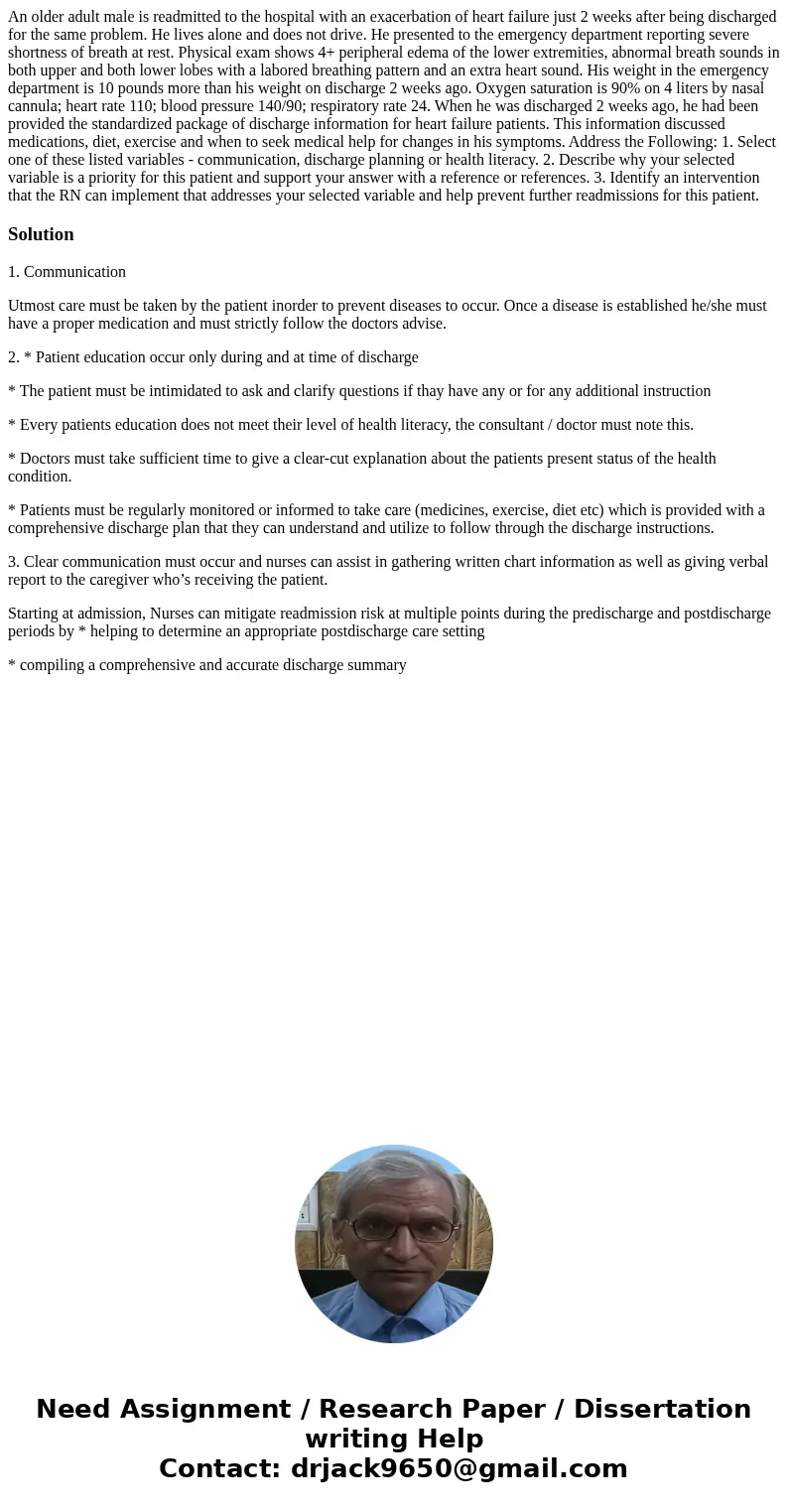An older adult male is readmitted to the hospital with an ex
An older adult male is readmitted to the hospital with an exacerbation of heart failure just 2 weeks after being discharged for the same problem. He lives alone and does not drive. He presented to the emergency department reporting severe shortness of breath at rest. Physical exam shows 4+ peripheral edema of the lower extremities, abnormal breath sounds in both upper and both lower lobes with a labored breathing pattern and an extra heart sound. His weight in the emergency department is 10 pounds more than his weight on discharge 2 weeks ago. Oxygen saturation is 90% on 4 liters by nasal cannula; heart rate 110; blood pressure 140/90; respiratory rate 24. When he was discharged 2 weeks ago, he had been provided the standardized package of discharge information for heart failure patients. This information discussed medications, diet, exercise and when to seek medical help for changes in his symptoms. Address the Following: 1. Select one of these listed variables - communication, discharge planning or health literacy. 2. Describe why your selected variable is a priority for this patient and support your answer with a reference or references. 3. Identify an intervention that the RN can implement that addresses your selected variable and help prevent further readmissions for this patient.
Solution
1. Communication
Utmost care must be taken by the patient inorder to prevent diseases to occur. Once a disease is established he/she must have a proper medication and must strictly follow the doctors advise.
2. * Patient education occur only during and at time of discharge
* The patient must be intimidated to ask and clarify questions if thay have any or for any additional instruction
* Every patients education does not meet their level of health literacy, the consultant / doctor must note this.
* Doctors must take sufficient time to give a clear-cut explanation about the patients present status of the health condition.
* Patients must be regularly monitored or informed to take care (medicines, exercise, diet etc) which is provided with a comprehensive discharge plan that they can understand and utilize to follow through the discharge instructions.
3. Clear communication must occur and nurses can assist in gathering written chart information as well as giving verbal report to the caregiver who’s receiving the patient.
Starting at admission, Nurses can mitigate readmission risk at multiple points during the predischarge and postdischarge periods by * helping to determine an appropriate postdischarge care setting
* compiling a comprehensive and accurate discharge summary

 Homework Sourse
Homework Sourse